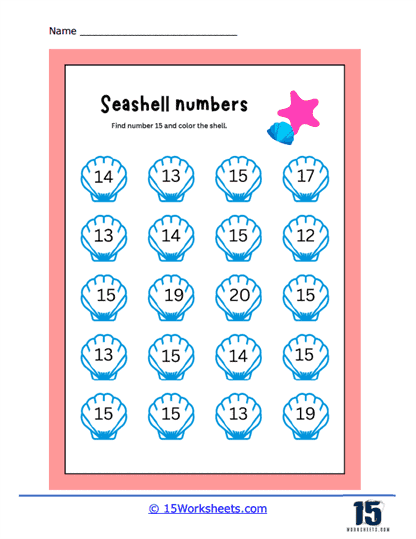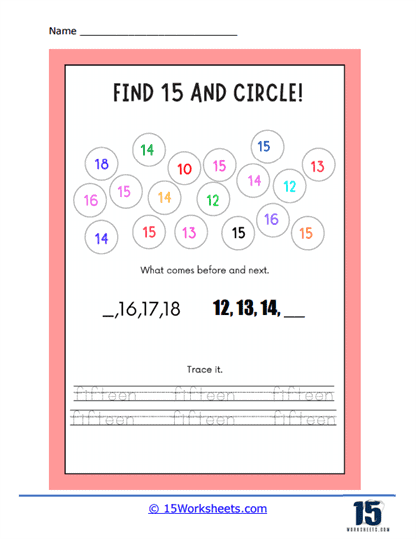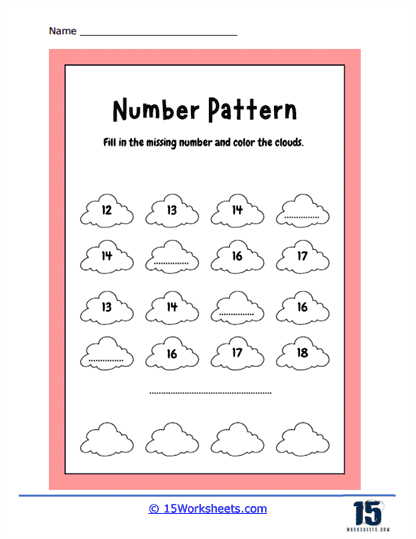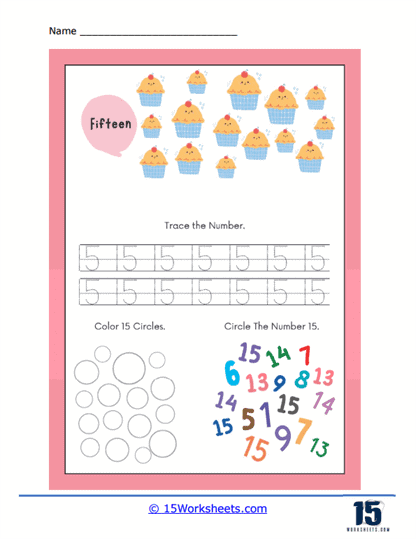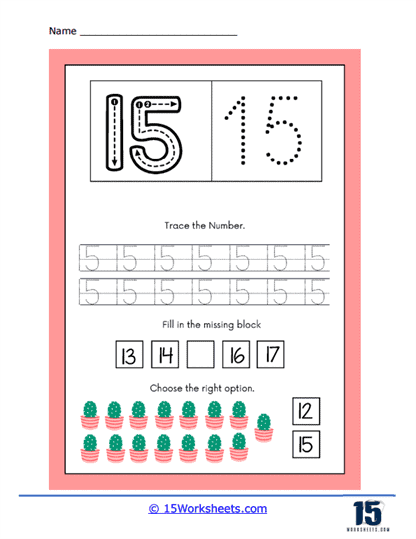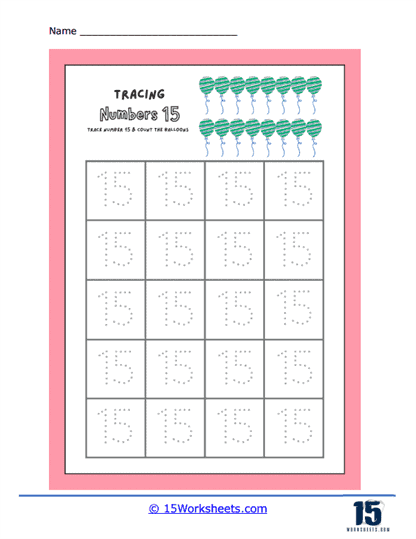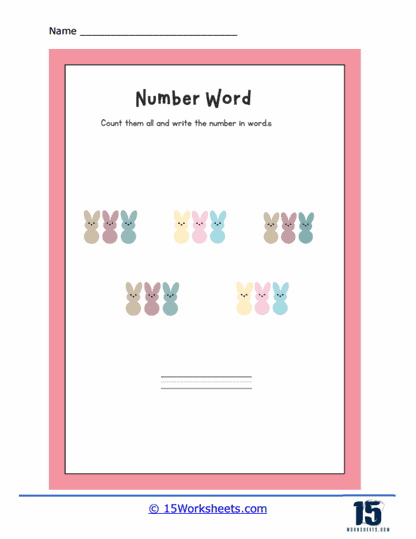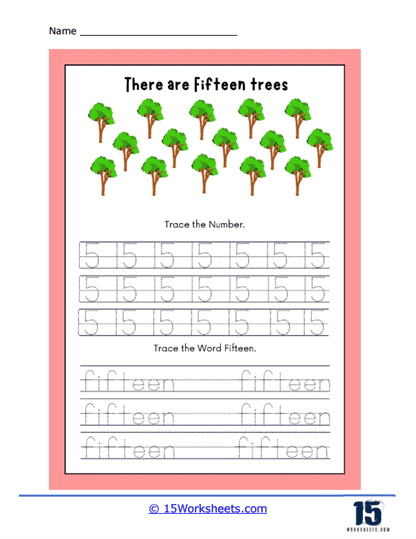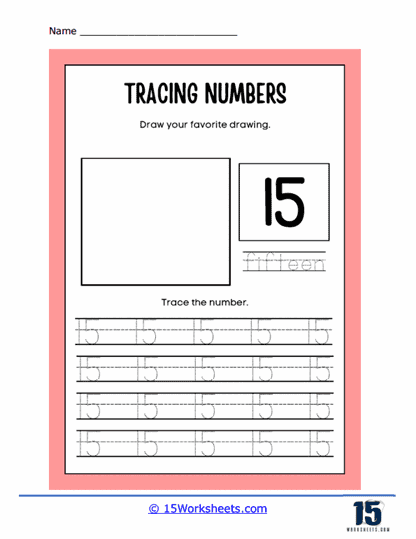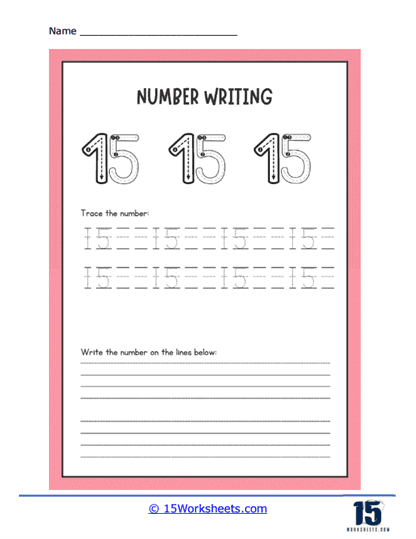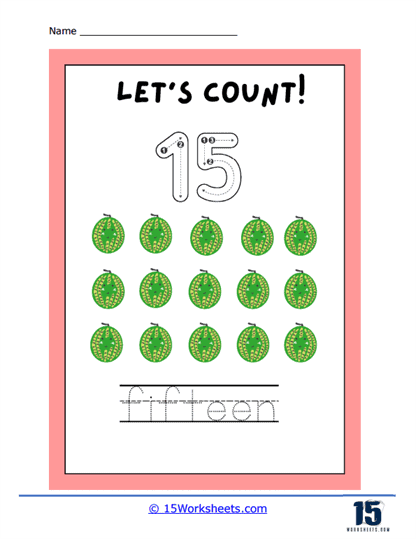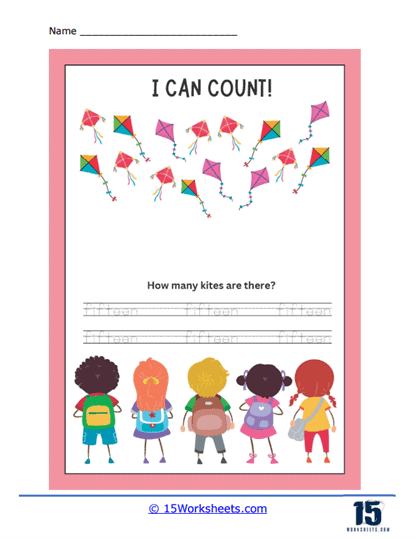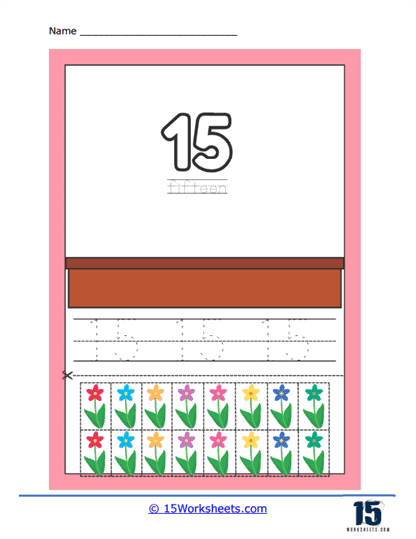Number 15 Worksheets
About These 15 Worksheets
These worksheets were created to teach elementary students the concept and use of the number 15. They can be structured in a variety of ways, including tracing the number 15, adding or subtracting to make 15, breaking down 15 into its constituent parts, and identifying the number 15 among other numbers. They include a wide range of activities and exercises related to the number 15, such as:
Tracing and Identification– Children can trace the numeral “15” to practice writing the number correctly. Some worksheets feature multiple numbers, and children are asked to identify and circle or highlight the number 15 among others.
Counting Objects – Children will be presented with sets of objects, such as apples, stars, or animals, and they are required to count how many there are. Some worksheets may specifically focus on sets containing exactly 15 objects.
Addition and Subtraction Operations – More advanced worksheets will involve simple addition or subtraction problems where the number 15 is used as one of the operands. For example, children may need to solve equations like 8 + 7 = __ or 20 – __ = 15.
Number Patterns – Students will explore number patterns involving 15, such as filling in missing numbers in a sequence like 5, 10, __, 20, 25, or identifying patterns where every third number is 15.
They provide a structured and step-by-step approach to learning. This is particularly important for elementary students who are still getting to grips with basic numerical concepts. The systematic layout of a worksheet can guide a student through the learning process in an orderly and digestible manner. By isolating the number 15, teachers can ensure students grasp the singular concept without being overwhelmed by too many ideas at once.
These worksheets help to reinforce and consolidate learning. Repetition is a powerful learning tool, especially in the early stages of education. When children are repeatedly exposed to the number 15, in a variety of contexts and exercises, it allows the learning to become deeply ingrained. They might, for example, be asked to count 15 objects, draw 15 shapes, or write out the word ‘fifteen’. Each of these activities reinforces the numerical concept in a different way.
The worksheets will also help students to understand the relationship between numbers. By practicing how to add, subtract, multiply, and divide to get 15, students can begin to see how different numbers interact with each other. They can see, for instance, that 10 + 5 equals 15, but so does 7 + 8, which could lead to discussions about number pairs and basic arithmetic.
Many of them are designed with colorful graphics, puzzles, and games, all geared towards making learning more interactive and fun. As a result, students are more likely to be interested and motivated to learn. They might count 15 apples on a tree, color 15 balloons, or fill in a number square with 15 at the center. These varied activities stimulate different parts of the brain, ensuring a holistic learning experience.
Moreover, worksheets such as these cultivate independent learning. With clear instructions, children can complete the tasks at their own pace, thereby fostering a sense of self-reliance and autonomy. This also encourages them to problem-solve and think critically, important skills that will benefit them throughout their academic journey.



